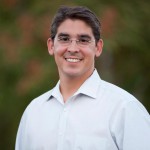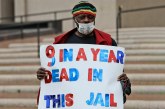
Every week until the election, we will have a question for the DJUSD School Board Candidates. We have a word limit of roughly 350.
Please also see the Vanguard Candidate’s forum from Sunday, September 18.
Question 5: How can the district bring restorative policies into discipline for students and conflict resolution for faculty, staff and the public?
 Susan Lovenburg
Susan Lovenburg
The district began introducing restorative practices for conflicts involving students some four or five years ago and the effort has broadened and deepened every year. I credit district and school staff for this change, as they move away from traditional disciplinary practices toward protocols that foster greater equity while retaining a focus on a safe, supportive environment for students and staff. You can see the results of their efforts in the downward trend in suspensions and expulsions. (Ed-Data: Student tab, then Suspension and Expulsion tab)
http://www.ed-data.org/district/Yolo/Davis-Joint-Unified
More recently, district and school staff began to explore trauma-informed care practices. This approach seeks to understand the challenges a student faces outside the school environment to inform how to best serve them in the classroom. This is an important facet of the Board’s focus on the social-emotional well-being of our students.
The School Board has also been proactive in improving conflict resolution. Following a controversy that resulted in the resignation of a School Board member and considerable harm to the community, the superintendent and Board formed an ad hoc working group to research how to better resolve conflict in the early stages. As a result, the district now has a formal partnership with the Yolo Conflict Resolution Center to provide free mediation services when both parties agree to come together to repair harm.
All these efforts, taken together, are very promising, but require continued leadership and focus to truly become part of the culture of how we serve children and families in the Davis Joint Unified School District. This is one of the highest priorities of my continued service on the School Board.
 Bob Poppenga
Bob Poppenga
There is general agreement by experts that traditional and zero-tolerance approaches to handling student discipline at schools are not effective and are actually detrimental to students. In many cases, disciplinary actions that result in a student missing classes (e.g., suspensions or expulsions) contribute to the student falling even further behind their peers. Also, disparities in the application of traditional school discipline approaches result in a disproportionate impact on minority student populations. Successful implementation of restorative justice (RJ) practices in community and juvenile justice settings has led to their adoption by a number of school districts (a good example is Oakland – http://www.nytimes.com/2013/04/04/education/restorative-justice-programs-take-root-in-schools.html). The goal of RJ practices is to minimize negative impacts on students, focus attention on harm to victims, and improve overall school climate. The definition of RJ is broad, but at its core it is a process whereby peaceful and non-punitive approaches are used to address harm, resolve conflict, and problem solve. It has been characterized as shifting “the emphasis from managing behavior to focusing on building, nurturing, and repairing relationships” (Hopkins, B., Restorative Justice in Schools, Mediation in Practice, 2003). The Davis community has adopted an RJ approach in collaboration with the Yolo County District Attorney’s office called Neighborhood Court, an adult criminal offender diversion program. So the idea of RJ is not new to our community.
There has been interest in, and some movement toward, adopting RJ practices in our schools. The District website links to several RJ resources under School Climate. However, it is difficult to determine the extent of current implementation and it is too early to assess longer term District impacts since it can take several years to achieve necessary buy-in from all parties. There are several significant challenges to effective implementation of RJ in a school district. Successful programs require a philosophical and cultural change in how student discipline is approached and a sustained commitment of resources in terms of time and training (i.e., funding). It will require leadership on the part of our District to make sure that all of the necessary conditions for long term program success are in place. Proper oversight by the School Board and District administration is essential to ensure that we have a program that is more than a name and is truly making a difference. The existence of Neighborhood Court might provide a source of knowledge and experience that could be utilized by the District. In my view, one key to success will be to have a uniform and consistent program across all school sites.
The principles of RJ and conflict resolution can certainly be applied to other situations involving teachers, coaches, and parents. However, I am not convinced that our District has an effective conflict resolution process in place or, if it does, that it is being uniformly applied. As a School Board Trustee I would endeavor to make sure that our policies and processes for dealing with conflicts follow best practices, are well communicated to all parties, and are being consistently followed. The District has some work to do to meet these goals.

Jose Granda
Parents want peace of mind that school is a safe and enjoyable place for their children where learning in their formative years is a main priority. A supportive, safe and fun environment is key to students’ success and to build self-esteem. My view on this is that no student should have to endure bullying, feel discriminated or threaten. Towards that goal there are several approaches, of which zero tolerance is one of them and so are restorative policies. I think neither are necessary negative if the central objective as a school district is the supportive safe and fun environment.
On the other hand we must also show compassion and understanding of those who cause problems. They deserve assistance in order to change their behavior. My view is that prevention is far better than dealing with a situation out of hand. For this reason restorative policies and training school personnel in those is a positive step. Identifying personal circumstances at home, health issues or other reasons may give school personnel the ability to deal with particular cases.
Whether we call it zero tolerance or restorative practices, the end goal is the same, to create the right environment for students and maintaining control to keep it that way. What is necessary is to take action and deal with the problem immediately, before escalates. What I would suggest in general is to have policies in place to prevent discipline problems. A student absence should not be just a statistic but school officials should give the family the support and communication to prevent such situation to continue. I agree that restorative policies may assist in this regard, but the action before a potential problem has to be a preemptive action and not deal with the consequences but rather deal with the root of the problem immediately.

Alan Fernandes
Restorative practices build a positive school culture and promote inclusive, fair decision-making and conflict resolution. During my time on the Board we have increased the number of school counselors throughout the district, including at the Elementary schools. Having more counselors available allows the district to better understand each child’s needs and handle discipline if a situation warrants such action.
I was appointed to the Board over two years ago as a result of a conflict between a Board Member and an employee of DJUSD. This situation caused a lot of turmoil in the district and the community. Throughout my time on the Board, I have committed myself to restoring trust between Board Members, faculty, parents, and the community. I have also focused on changing the culture of the district to one that promotes restorative practices. For instance, as President of the Board in 2015, I established regular office hours to provide the community additional opportunities to communicate directly with Board Members.
In addition to looking internally and improving Board policies as they relate to the complaint process, the DJUSD has also looked externally to community resources, such as the Yolo County Conflict Resolution Center for help with improving these policies and providing access to their other resources and services.
Restorative practices are important to the entire school community and I support continuing the work undertaken thus far and constantly seek improvements to maintain the positive school culture that restorative practices promote.





I don’t know much about restorative practices, but it is interesting that I don’t think any of them other than Bob Poppenga do either. Susan and Alan’s answers are poor considering they are incumbents and do not address the issue of restorative practices.
Well, made my choices Wednesday, and filled out my ballot to that effect… see nothing above to reconsider (I drop off my VBM ballot on Election day, just in case someone does a “stupid” between now and then).
I strongly encourage all to vote… if you don’t, you lose the right to “b___h” about the outcome, to my way of thinking…
In many places RJ programs are just a way maximize ADA. Reducing suspensions brings more money to districts but is not a necessarily a good thing if your priority is not increasing ADA but instead creating a safe and calm environment. Not sure how this is implemented at DJU so I will withhold comment.